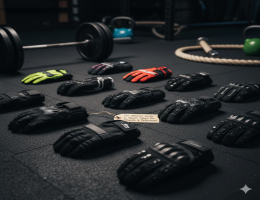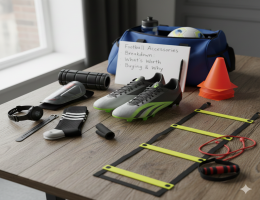
Relay Baton in Athletics: Rules, Techniques, and Tips for Perfect Baton Exchange
Posted on: 09 Oct, 2025
Relay races are among the most exciting events in athletics, and the relay baton plays a central role in determining a team’s success. A smooth baton exchange can make or break a race, no matter how fast the runners are. In this guide, we’ll explore everything you need to know about the relay baton, including its rules, size, passing techniques, and tips to ensure a perfect handover.
What Is a Relay Baton?
A relay baton is a hollow tube, usually made of aluminum or plastic, used in relay races. Each runner carries the baton for a specific distance before passing it to the next teammate. The baton ensures continuity and teamwork, symbolizing the unity of the team throughout the race.
Standard specifications:
- Length: 28–30 cm
- Diameter: 3.8–4 cm
- Weight: Minimum 50 grams
- Material: Metal or lightweight plastic
- Color: Brightly visible for easy identification during exchange
Rules for Relay Baton Exchange
The relay baton exchange must follow strict rules set by international athletic organizations like the IAAF (World Athletics):
- Exchange Zone: The baton must be passed within a 30-meter exchange zone. If the handover happens outside this zone, the team is disqualified.
- No Throwing: The baton cannot be thrown or dropped intentionally.
- Same Baton Throughout: Teams must use the same baton for the entire race.
- Dropped Baton: If dropped, the runner who dropped it must pick it up without obstructing other teams.
- Finishing Rule: The race is only valid if the baton, not the runner, crosses the finish line.
- These rules ensure fairness and precision in the relay event.
Relay Baton Passing Techniques
Perfecting the baton exchange technique is crucial for minimizing time loss. There are two main methods used by athletes:
1. Upsweep Method
- The receiver’s hand is placed behind with the palm facing down.
- The passer swings the baton upward into the receiver’s hand.
- Common in short-distance relays (4x100m).
2. Downsweep Method
- The receiver’s palm faces up, and the baton is passed in a downward motion.
- Offers better control and reduces the risk of dropping.
3. Push Pass Technique
- The passer pushes the baton forward into the receiver’s hand.
- Suitable for longer relays like the 4x400m, where precision matters more than speed.
Tips for a Perfect Baton Exchange
Mastering the relay baton handover takes practice, coordination, and trust. Here are some expert tips to improve your team’s exchange efficiency:
- Establish a Clear Call Signal: Use short, loud commands like “Hand!” or “Go!” to time the exchange.
- Consistent Practice: Regular drills help runners get used to each other’s speed and rhythm.
- Correct Grip: Hold the baton near the bottom for easy passing.
- Smooth Acceleration: The receiver should start running before receiving the baton to maintain momentum.
- Maintain Focus: Keep eyes forward and avoid looking back during the handover.
Common Mistakes to Avoid
Even experienced teams can lose races due to simple baton errors. Avoid these:
- Delayed take-off or early acceleration.
- Holding the baton too tightly during exchange.
- Confusion in communication signals.
- Crossing into another team’s lane during handover.
Why the Relay Baton Matters in Team Success
The relay baton isn’t just a piece of equipment—it represents team coordination, discipline, and trust. Successful baton exchanges demonstrate a team’s ability to work as one unit, where every second counts. A flawless handover often determines the winner more than raw speed does.
Conclusion
The relay baton is a symbol of unity and precision in athletics. By understanding its rules, mastering passing techniques, and practicing efficient handovers, athletes can enhance both performance and teamwork. Remember, in relay races, speed wins you meters—but smooth baton exchanges win you medals.







Comments
No comment yet.